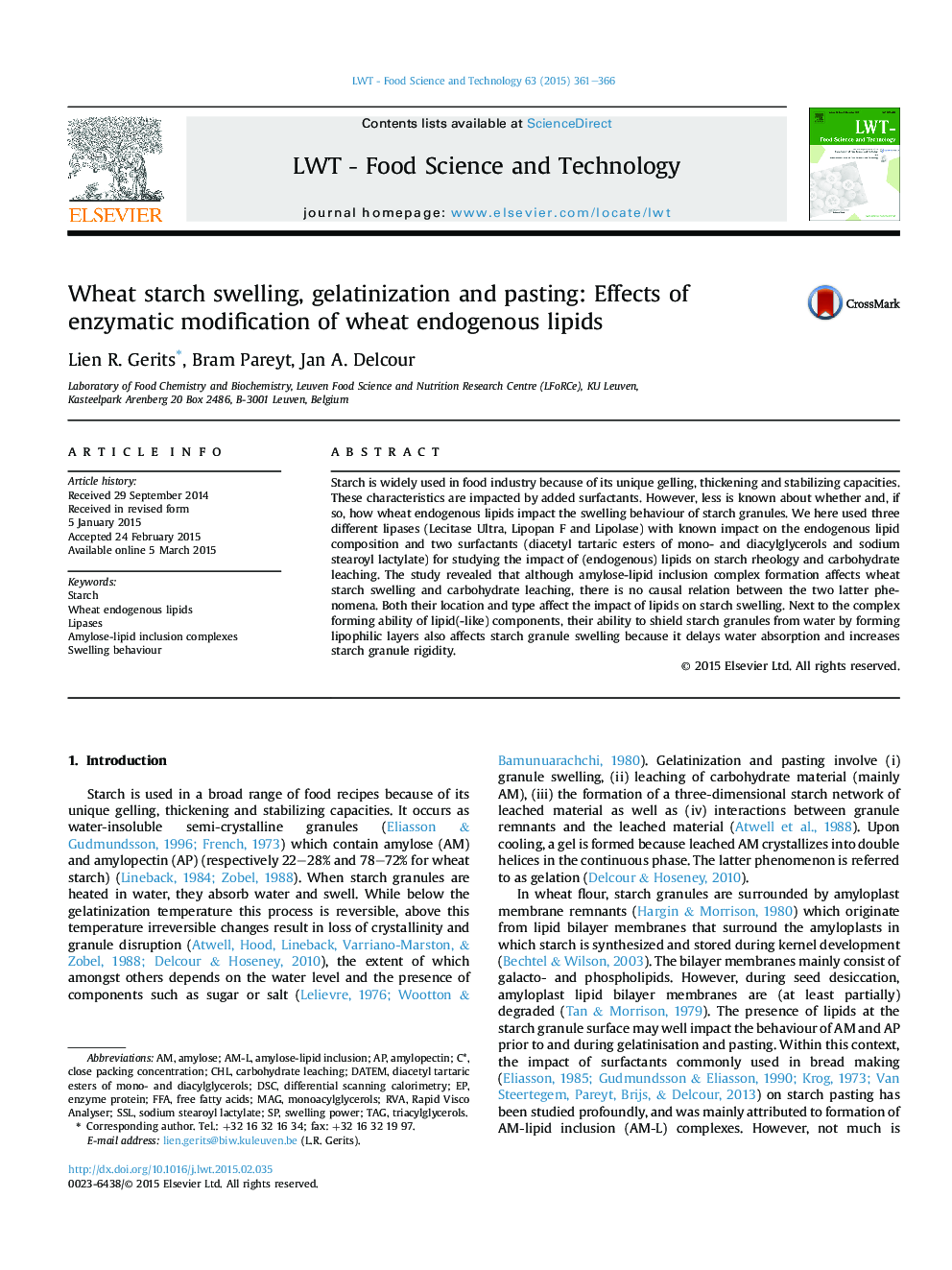| Article ID | Journal | Published Year | Pages | File Type |
|---|---|---|---|---|
| 6402071 | LWT - Food Science and Technology | 2015 | 6 Pages |
â¢The formation of amylose-lipid inclusion (AM-L) complexes is independent of the lipid type and its location.â¢There is no causal relation between AM-L complexes and wheat starch pasting behaviour.â¢Shielding the starch granules with a lipophilic layer can postpone starch pasting.â¢The increased RVA peak viscosities upon lipase or surfactant addition results from an increased starch granule rigidity.
Starch is widely used in food industry because of its unique gelling, thickening and stabilizing capacities. These characteristics are impacted by added surfactants. However, less is known about whether and, if so, how wheat endogenous lipids impact the swelling behaviour of starch granules. We here used three different lipases (Lecitase Ultra, Lipopan F and Lipolase) with known impact on the endogenous lipid composition and two surfactants (diacetyl tartaric esters of mono- and diacylglycerols and sodium stearoyl lactylate) for studying the impact of (endogenous) lipids on starch rheology and carbohydrate leaching. The study revealed that although amylose-lipid inclusion complex formation affects wheat starch swelling and carbohydrate leaching, there is no causal relation between the two latter phenomena. Both their location and type affect the impact of lipids on starch swelling. Next to the complex forming ability of lipid(-like) components, their ability to shield starch granules from water by forming lipophilic layers also affects starch granule swelling because it delays water absorption and increases starch granule rigidity.
